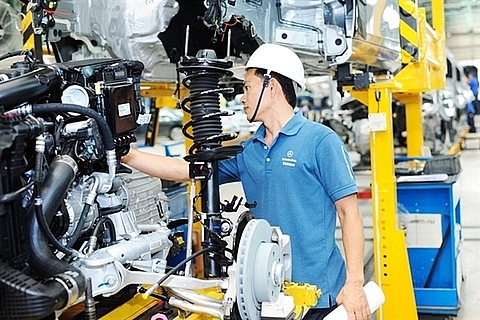Recommendations for EVFTA, EVIPA given the go-ahead
 |
| After the EVFTA comes into effect, the EU will remove nearly 86 per cent of tariff lines and more than 99 per cent of tariff lines will be eliminated after seven years.- Photo tapchicongthuong.vn |
The same day, the committee also gave recommendations to adopt the Viet Nam-EU Investment Protection Agreement (EVIPA) with 26 of 39 members saying yes.
Later, in February, the recommendations and consent of the agreements will be voted for at the Parliament’s plenary session.
Assuming the Parliament gives its consent in February, the EVFTA will come into force one month after Viet Nam and the EU have notified each other that legal procedures have been completed.
Meanwhile, the EVIPA will still have to be ratified by all member states which can take several years.
The EVFTA includes 17 chapters, two protocols and a number of accompanying memorandums of understandings on trade in goods and services, investment, trade remedies, competition, state-owned enterprises, government procurement and intellectual property.
In terms of tariffs, after the EVFTA comes into effect, the EU will remove nearly 86 per cent of tariff lines and more than 99 per cent of tariff lines will be eliminated after seven years.
Currently, the EU is Viet Nam's 5th biggest foreign investor. The figure is expected to increase significantly in the near future as 62 per cent of investors from the EU have a positive opinion of doing business in the Southeast Asian country, experts have said.
Reuters cited Belgian lawmaker Geert Bourgeois, who led discussions in parliament, as saying that Tuesday’s vote was a positive signal to the ASEAN region and the rest of the world in times of rising trade tensions.
“This deal really is a win-win situation. In absolute terms Vietnamese exports of goods and services to the EU will increase by 15 billion euros while EU exports to Viet Nam augment by 8.3 billion euros by 2035,” he said.
What the stars mean:
★ Poor ★ ★ Promising ★★★ Good ★★★★ Very good ★★★★★ Exceptional
 Tag:
Tag:
Themes: EVFTA & EVIPA
Related Contents
Latest News
More News
- VAL inaugurates second production line to meet domestic animal feed demand (December 19, 2025 | 16:37)
- Sun Group pioneers urban tram system in Phu Quoc (December 19, 2025 | 15:00)
- Top 10 notable events of Vietnam’s industry and trade sector in 2025 (December 19, 2025 | 14:00)
- Seven major projects launched to drive Hanoi’s next growth phase (December 19, 2025 | 14:00)
- Rare, beautiful, sustainable: the mark of iconic real estate (December 19, 2025 | 08:00)
- Mondelez Kinh Do - a chapter of purpose-led leadership in Vietnam (December 18, 2025 | 09:44)
- VNPAY services receive the highest-level PCI DSS international security certificates for six consecutive years (December 17, 2025 | 23:47)
- F&N deepens investment in Vinamilk (December 17, 2025 | 09:00)
- Long-term capital seen as key hurdle to green growth (December 16, 2025 | 08:00)
- HDS Summit spotlights Vietnam’s rising role in regional supply chains (December 16, 2025 | 08:00)
























 Mobile Version
Mobile Version